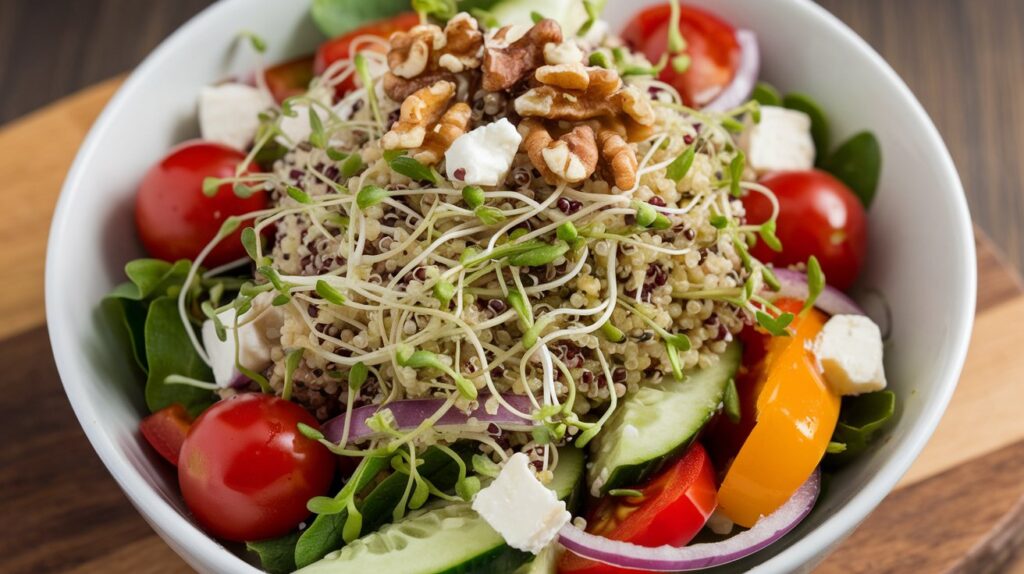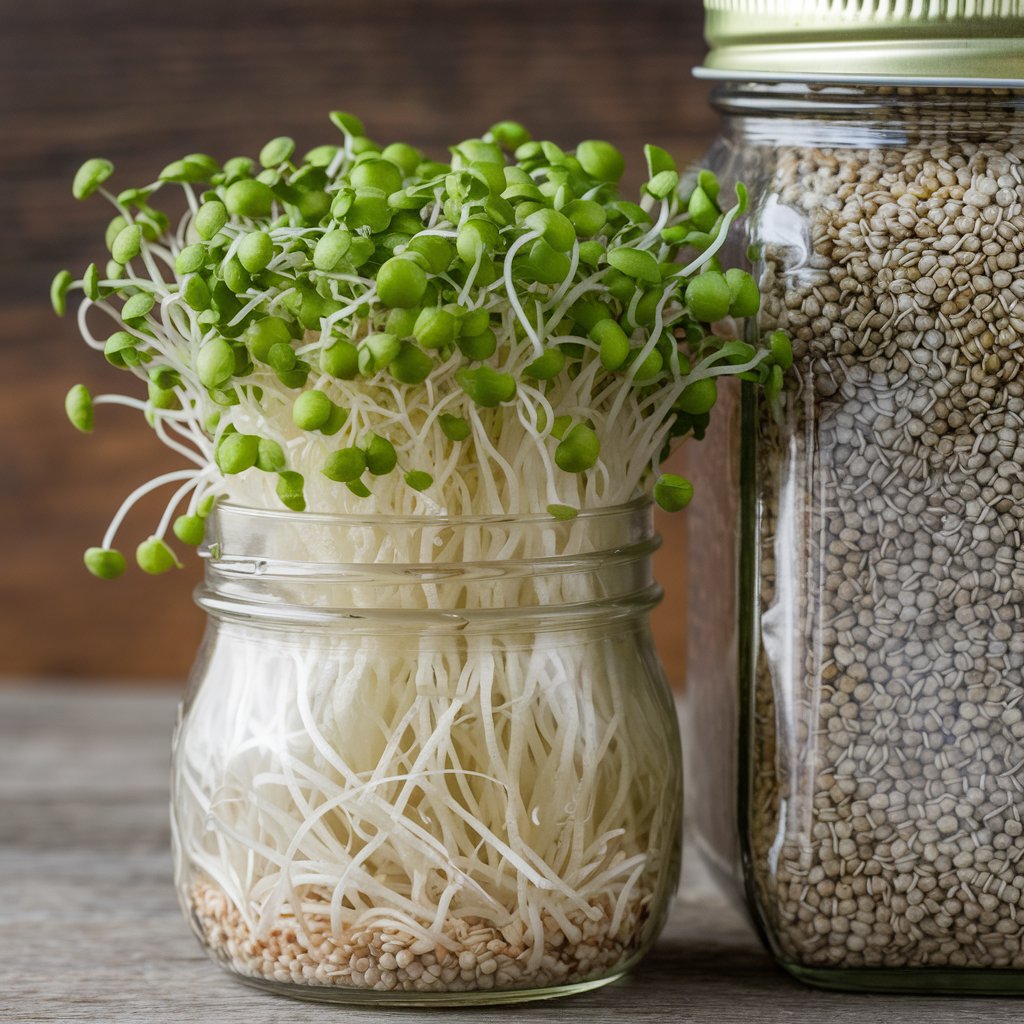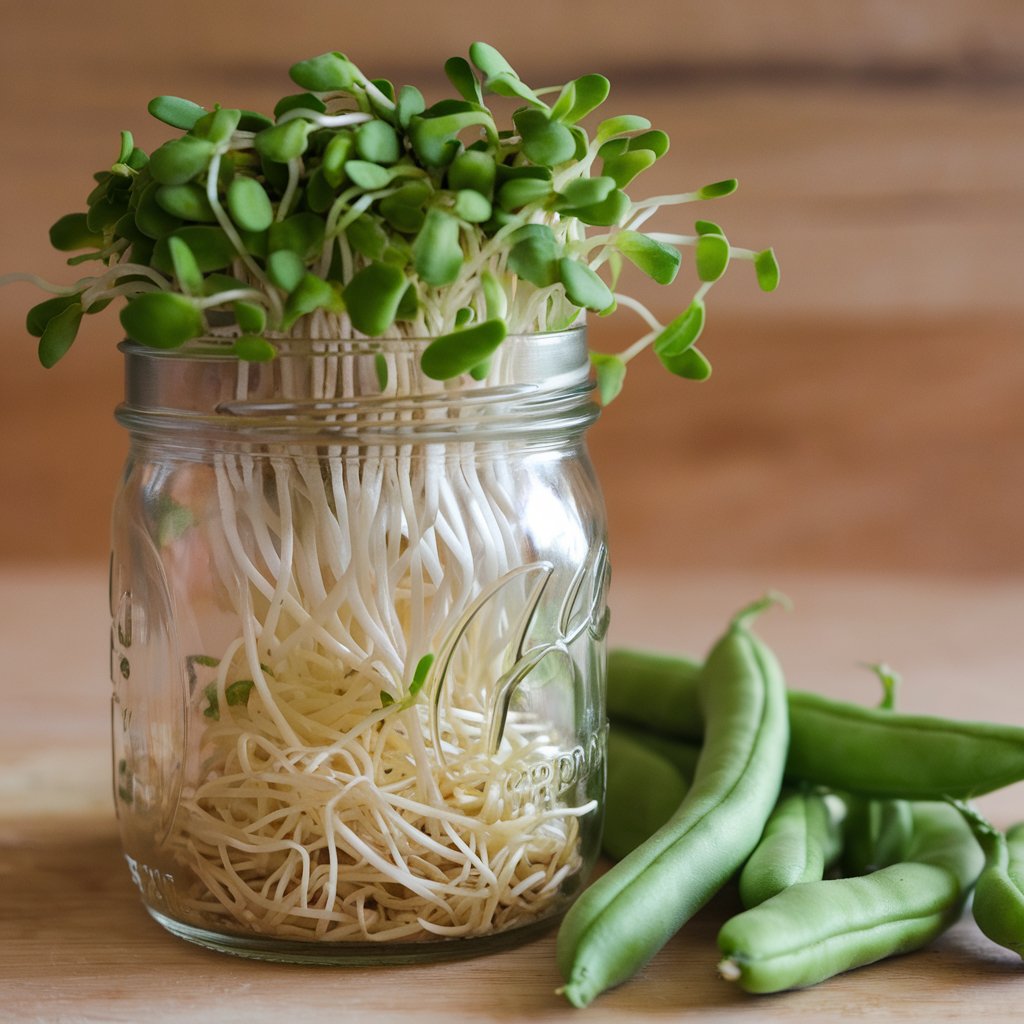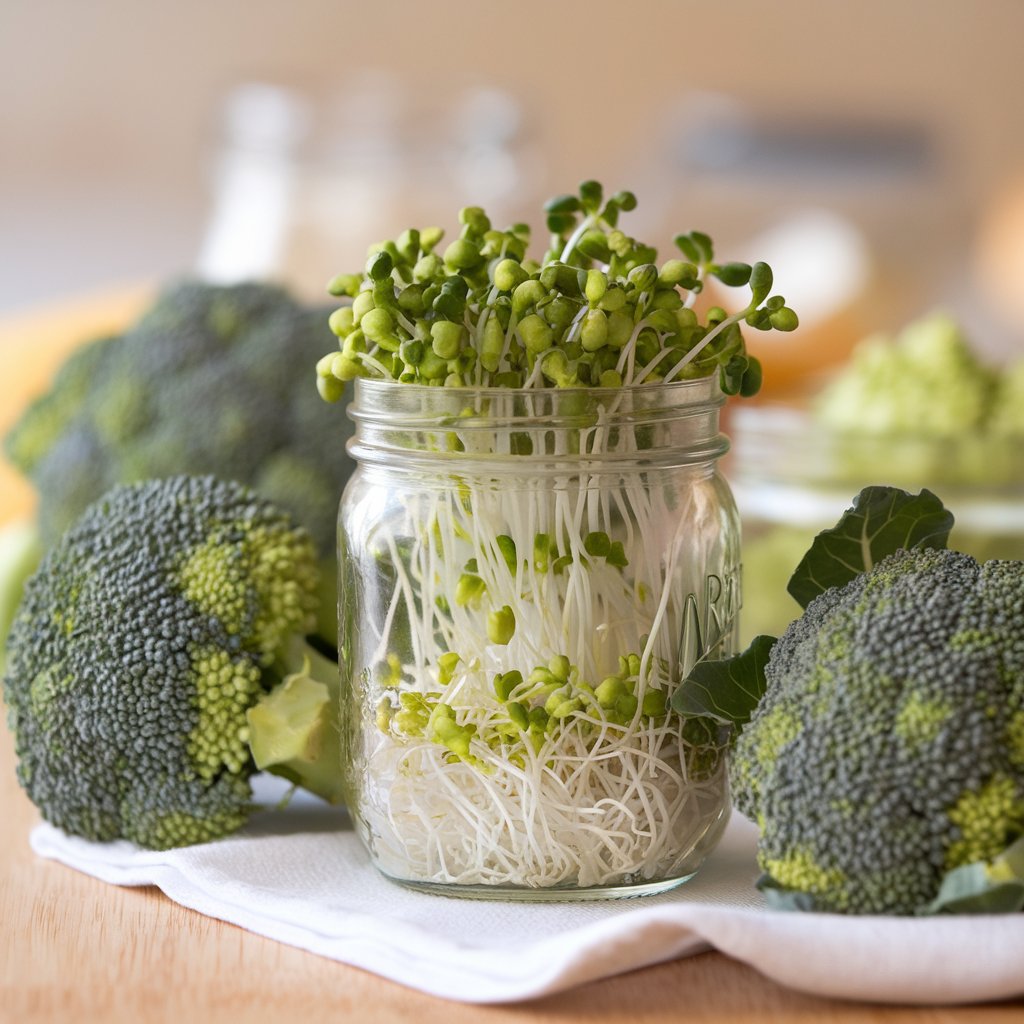Quinoa is already celebrated as a highly nutritious grain, but have you ever considered sprouting quinoa? Sprouted quinoa, or quinoa sprouts, is a game-changer in the world of healthy eating. Packed with nutrients, enzymes, and easy-to-digest proteins, sprouted quinoa can elevate your meals and boost your health in ways that traditional quinoa can’t.
In this guide, we’ll walk you through everything you need to know about sprouting quinoa, its health benefits, and how you can incorporate it into your diet. By the end, you’ll be equipped with the knowledge to start sprouting quinoa at home and enjoy its incredible benefits!
What is Sprouted Quinoa?
Sprouted quinoa is quinoa seeds that have been soaked in water and allowed to germinate. The process of sprouting involves soaking quinoa seeds for a period, rinsing them several times a day, and allowing them to sprout over the course of a few days. The germination process unlocks the full potential of the quinoa, enhancing its nutritional profile and making it easier to digest.
Sprouting quinoa isn’t a new trend, but it’s definitely gaining popularity as people discover the powerful health benefits of quinoa sprouts. By sprouting quinoa, you’re increasing its enzyme content, which helps with digestion, and unlocking a greater amount of vitamins and minerals that are usually bound up in the seed.
How Do You Sprout Quinoa?
Learning how to sprout quinoa is simple and can be done in just a few easy steps. Here’s a guide on how to sprout quinoa at home:
Step 1: Rinse the Quinoa
Start by rinsing 1 cup of quinoa thoroughly in cold water to remove any saponins (natural coating on the seed that can make it taste bitter). You can rinse the quinoa in a fine-mesh strainer or a cheesecloth to ensure you remove all the saponins.
Step 2: Soak the Quinoa
Place the rinsed quinoa in a jar or a bowl and cover it with plenty of water. Let it soak for about 8 to 12 hours. For best results, you can soak it overnight. This soaking process kick-starts the sprouting process by rehydrating the seeds.
Step 3: Drain and Rinse
After soaking, drain the quinoa and rinse it thoroughly under cold water. It’s important to rinse quinoa multiple times a day to ensure it doesn’t dry out or become moldy.
Step 4: Let the Quinoa Sprout
Once rinsed, place the quinoa in a sprouting jar or any container that allows good airflow. Leave it at room temperature, away from direct sunlight, and let it sprout for 1 to 2 days. You’ll start seeing little tails sprouting from the seeds after about 24 hours.
Step 5: Harvest and Enjoy
After the quinoa has sprouted, it’s ready to eat! Keep it in the fridge for up to three days for freshness. If you plan to cook it, simply rinse it again and cook it just like regular quinoa—however, sprouted quinoa cooks faster!
Benefits of Sprouted Quinoa
The process of sprouting quinoa enhances its nutritional value. Here are some key benefits of sprouted quinoa:
1. Improved Digestibility
Sprouting quinoa breaks down the complex starches in the seeds, making them easier for your body to digest. It also activates enzymes that help break down proteins, making it gentler on your digestive system and easier to absorb nutrients.
2. Increased Nutrients
Sprouted quinoa has higher levels of vitamins and minerals than its unsprouted counterpart. It’s rich in B vitamins, magnesium, iron, and folate. Sprouting quinoa boosts the bioavailability of these nutrients, meaning your body can absorb more of them.
3. Boosts Protein Content
Quinoa is already known for being a high-protein grain, but sprouting quinoa can increase its protein content even further. Protein is crucial for building muscle, maintaining healthy skin, and supporting overall cellular functions.
4. Higher Antioxidant Levels
Sprouted quinoa contains higher levels of antioxidants compared to unsprouted quinoa. Antioxidants help protect your body from oxidative stress and free radical damage, supporting your immune system and reducing inflammation.
5. Better Blood Sugar Control
Sprouted quinoa has a lower glycemic index than regular quinoa, meaning it won’t cause spikes in blood sugar levels. This makes it an excellent choice for people with diabetes or those looking to manage their blood sugar levels.
6. Increased Fiber Content
Sprouted quinoa is also a great source of dietary fiber. Fiber helps regulate digestion, prevent constipation, and promote a healthy gut. It also supports weight management and lowers the risk of heart disease.
Can You Sprout Quinoa? The Answer is Yes!
Many people wonder, “Can you sprout quinoa?” The answer is a resounding yes! Quinoa is not only sproutable but also one of the easiest grains to sprout at home. When sprouted, quinoa becomes a powerhouse of nutrients and enzymes that are highly beneficial for your health.
Sprouted quinoa can be used in a variety of ways, from topping salads and soups to blending it into smoothies or making delicious sprouted quinoa patties. The options are endless!
How Long Does It Take for Quinoa to Sprout?
The process of sprouting quinoa usually takes between 1 to 2 days. During this time, the quinoa will develop small white tails, indicating that it’s ready to eat. The duration may vary depending on the temperature and humidity of your environment, but it typically doesn’t take more than 48 hours to sprout quinoa.
How to Use Sprouted Quinoa
Sprouted quinoa can be eaten raw or cooked. Here are some inventive ways to add it to your meals:
- Raw in Salads: Add sprouted quinoa to your favorite salads for a crunchy, nutrient-packed boost.
- In Smoothies: Blend sprouted quinoa into your smoothies for added protein and fiber.
- As a Snack: Eat sprouted quinoa as a snack by tossing it with your favorite seasonings or adding it to the trail mix.
- Cooked in Dishes: Use sprouted quinoa as a substitute for regular quinoa in dishes like stir-fries, bowls, or casseroles.

Organic Sprouted Quinoa: A Healthier Choice
If you’re looking for the highest quality sprouted quinoa, organic sprouted quinoa is the way to go. Organic quinoa is grown without the use of pesticides or synthetic fertilizers, ensuring that you’re eating a pure and clean product. Organic sprouted quinoa provides all the benefits of sprouted quinoa without any unwanted chemicals.
Final Thoughts on Sprouted Quinoa
Sprouted quinoa is an incredibly nutritious food that’s easy to grow and enjoy at home. With its enhanced digestibility, increased nutritional content, and numerous health benefits, sprouted quinoa is a must-try for anyone looking to improve their diet and overall well-being.
Whether you’re adding it to salads, smoothies, or cooked dishes, sprouted quinoa is a versatile, nutrient-dense addition to your meals. So why not give it a try? Start sprouting quinoa today and enjoy all the amazing benefits this superfood has to offer!
Boost your health one sprout at a time! Curious about the benefits of different seed sprouts? Click the link Sprouts to learn more.




